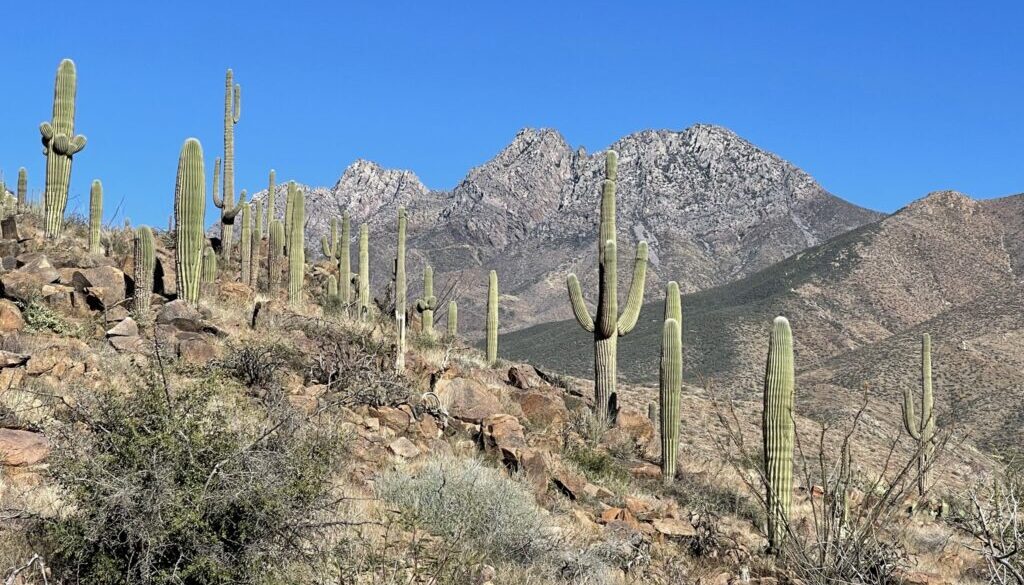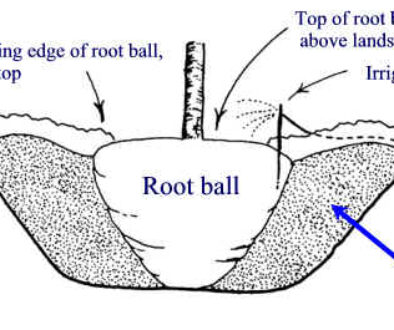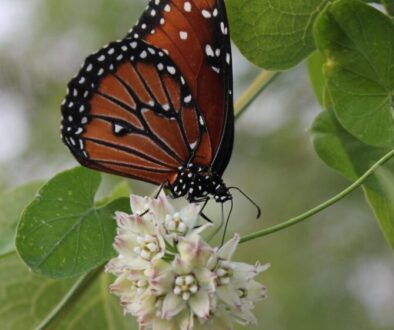Why Saguaros Struggled in 2023
January through April 2023 were some of the rainiest months in the past 30 years for the Sonoran Desert, and you could tell the plants enjoyed the extra water. Flowers bloomed massively, creosotes sprouted strongly, and cacti were engorged more than they had been in a long time. Then, we experienced the hottest, driest summer on record, and things began to die.
For cacti like saguaros, which are built to store massive amounts of rainwater specifically to survive drought periods, you would think that a dry summer would be taxing, but not fatal. But if you look around the Phoenix area lately, saguaros that are hundreds of years old are dropping like flies, usually after dripping a nasty black goop.
What’s happening, and why?
That black goop dripping from the sides of saguaros is the main symptom of a plant disease called “Bacterial Necrosis.” There’s a very brief window where it can be cured by having an arborist carefully cut out the infected section and sanitize it before it reaches the core of the saguaro’s vascular system. Once the necrosis has spread, it’s nearly always fatal. It can take months or even years to fall over, but an untreated, infected saguaro will most likely die.
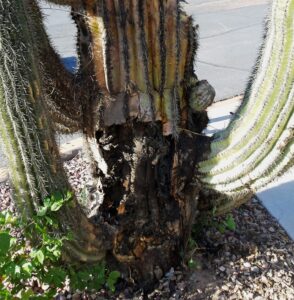
Bacterial Necrosis occurs when a plant’s immune system is weakened enough that bacteria is able to enter and colonize it from within. The bacteria eats plant materials and the carbohydrates stored within and gradually degrades its stability until it falls over.
In the case of the saguaro, several factors led to the mass dying we are currently seeing.
Firstly, we experienced over a month where the nighttime temperature didn’t descend below 95 degrees in some areas. Most desert plants are attuned to the temperature and strategically close their stomata and pause cellular respiration when the temperature is above 90 degrees, to preserve water. But just like animals, plants can’t hold their breath forever. If more than a week goes by without being able to engage in cellular respiration, any plant will begin to suffer. This stress can be enough to weaken the immune system and allow bacteria to get in.
Secondly, bad landscaping practices can lead to extra stress on saguaros. Even though they are known for being the icon of the harsh ecosystem we live in, they are not invincible. A saguaro planted in the median of a busy street goes through much more stress than a saguaro in nature, since it’s stuck in a spot where the ground is always hot from asphalt and there is little horizontal room for roots to grow.
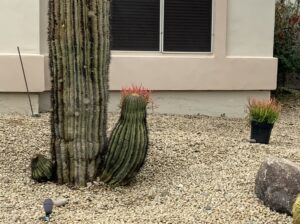
A saguaro moved from its original location and planted somewhere else is also more likely to experience more stress than a saguaro in nature. If the saguaro was planted multiple feet deeper in the ground than where it was born, its rootball will have little to no access to oxygen and there will be multiple feet of trunk buried under the ground experiencing constant tissue damage as it grows and shrinks with the seasons. It may take several years, even up to two decades after being planted badly, before bacterial necrosis sets in. If a saguaro’s trunk doesn’t taper in width at its bottom foot or two, it was likely planted too deep and will likely die prematurely.
Additionally, the cardinal direction of the saguaro’s planting is vital to its long-term health. Growers often keep track of which part of a cactus is facing north. If this knowledge is lost through repotting or transit, a saguaro can be planted facing the wrong direction. This will lead to sun damage and a higher likelihood of dying prematurely to necrosis or other diseases.
Other human actions can lead to a saguaro’s untimely demise as well.
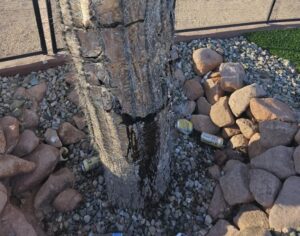
Installing a saguaro in a spot with no other plant life and covered in gravel? Cutting off the saguaro’s root space permanently to install a pool? Covering an area near a saguaro with fake turf? Overwatering a saguaro or putting a plant with high water requirements too close to a saguaro?
All of these actions can build up stress for a saguaro in the long term. Then, one bad summer, and next thing you know your prized plant is falling over.
With all this in mind, it’s important to note that saguaros are very low-maintenance plants. They are icons of the Sonoran Desert, vital to the ecosystem, and can increase property value by tens of thousands of dollars. The tricky part comes in the installation. You need to make sure your saguaro is being planted in the correct spot, with the correct cardinal orientation, at the healthiest depth for the rootball, and near other low-water plants.
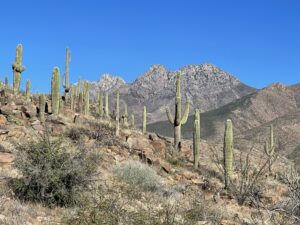
ELS Maintenance & Construction does installation jobs for communities across the Valley, utilizing Arizona’s best practices to keep every tree, shrub, and cactus as healthy as possible. If you’re interested in submitting a Proposal Request, email us at contactus@evergreenaz.com or call 602-243-1106.

